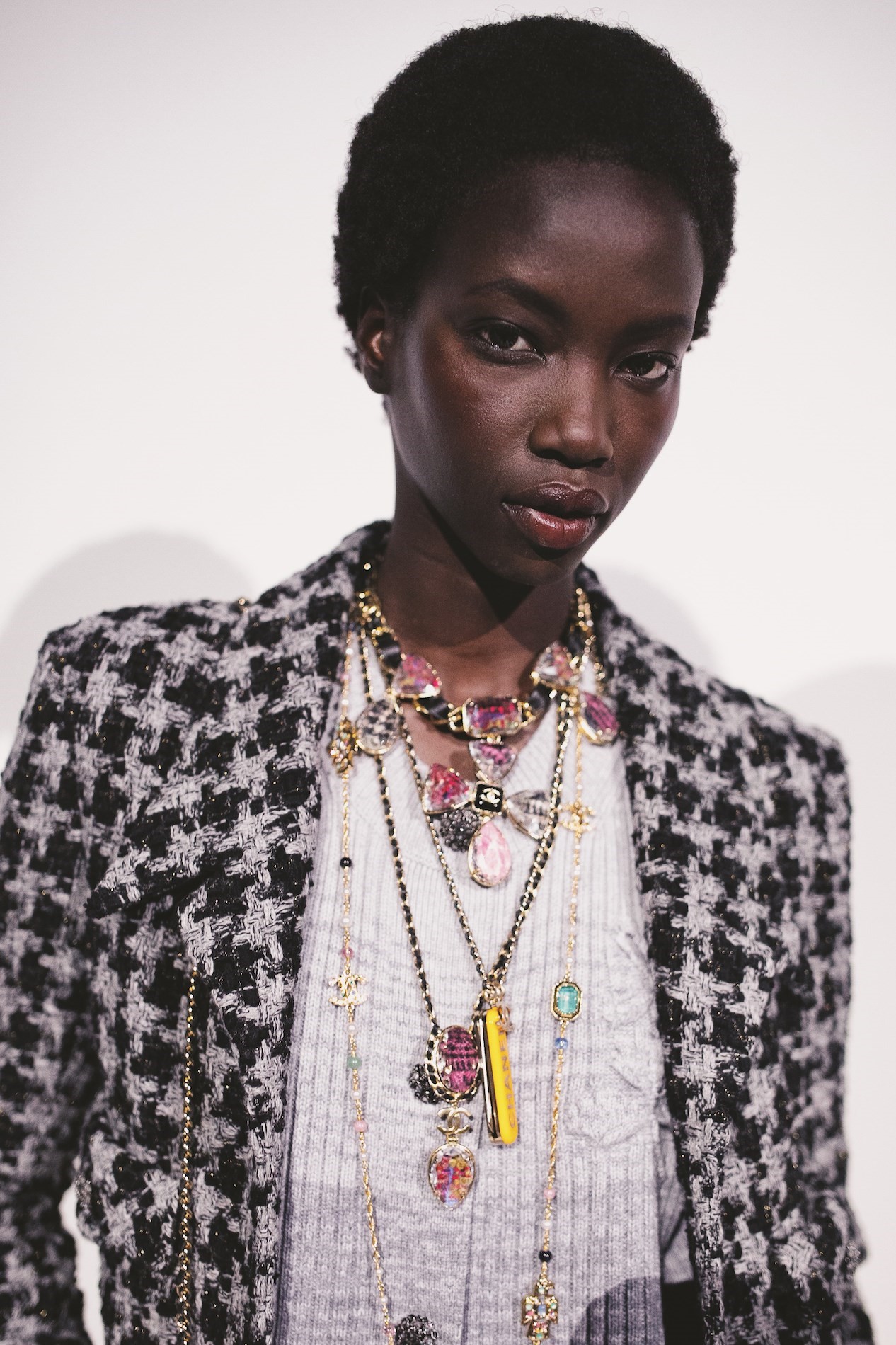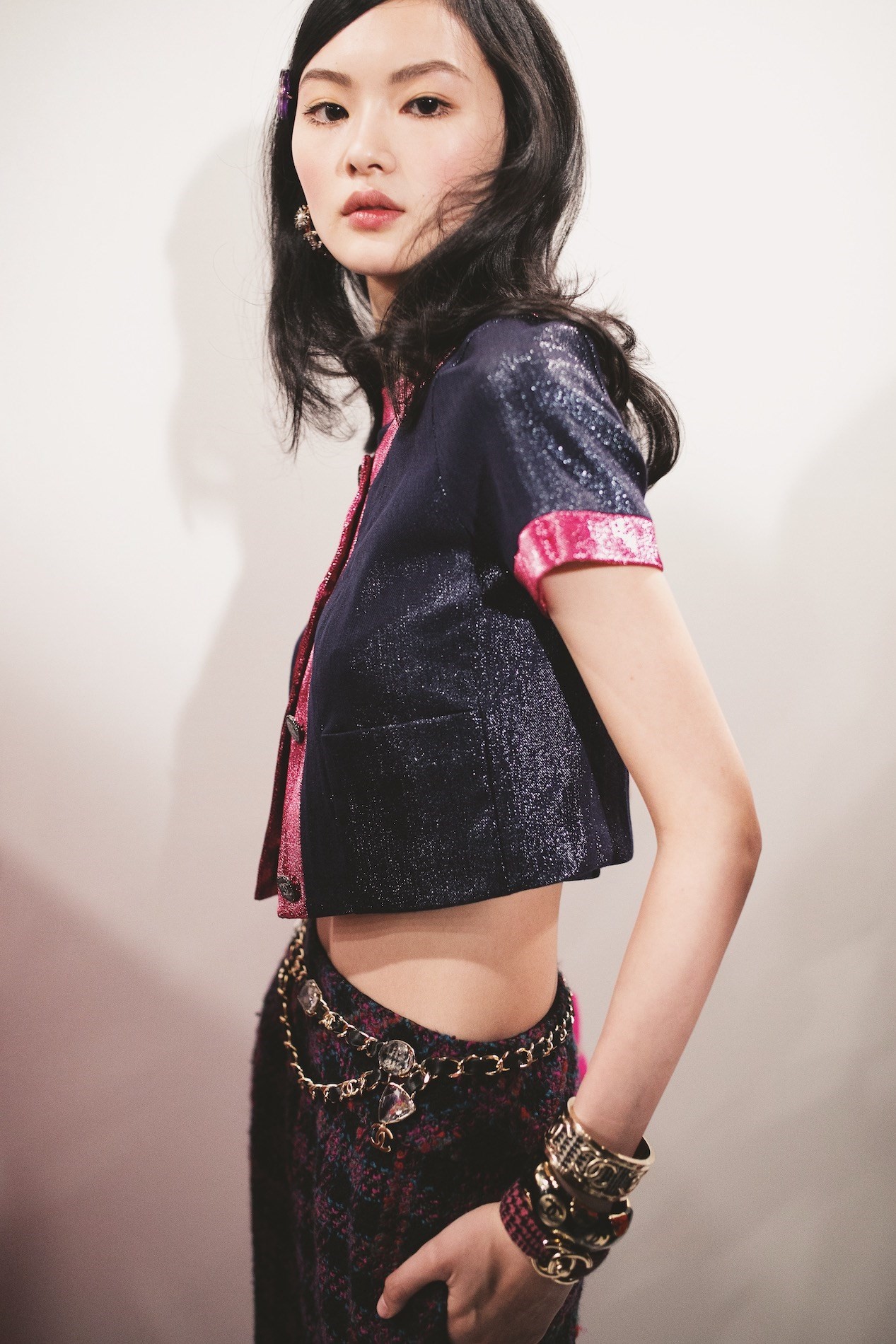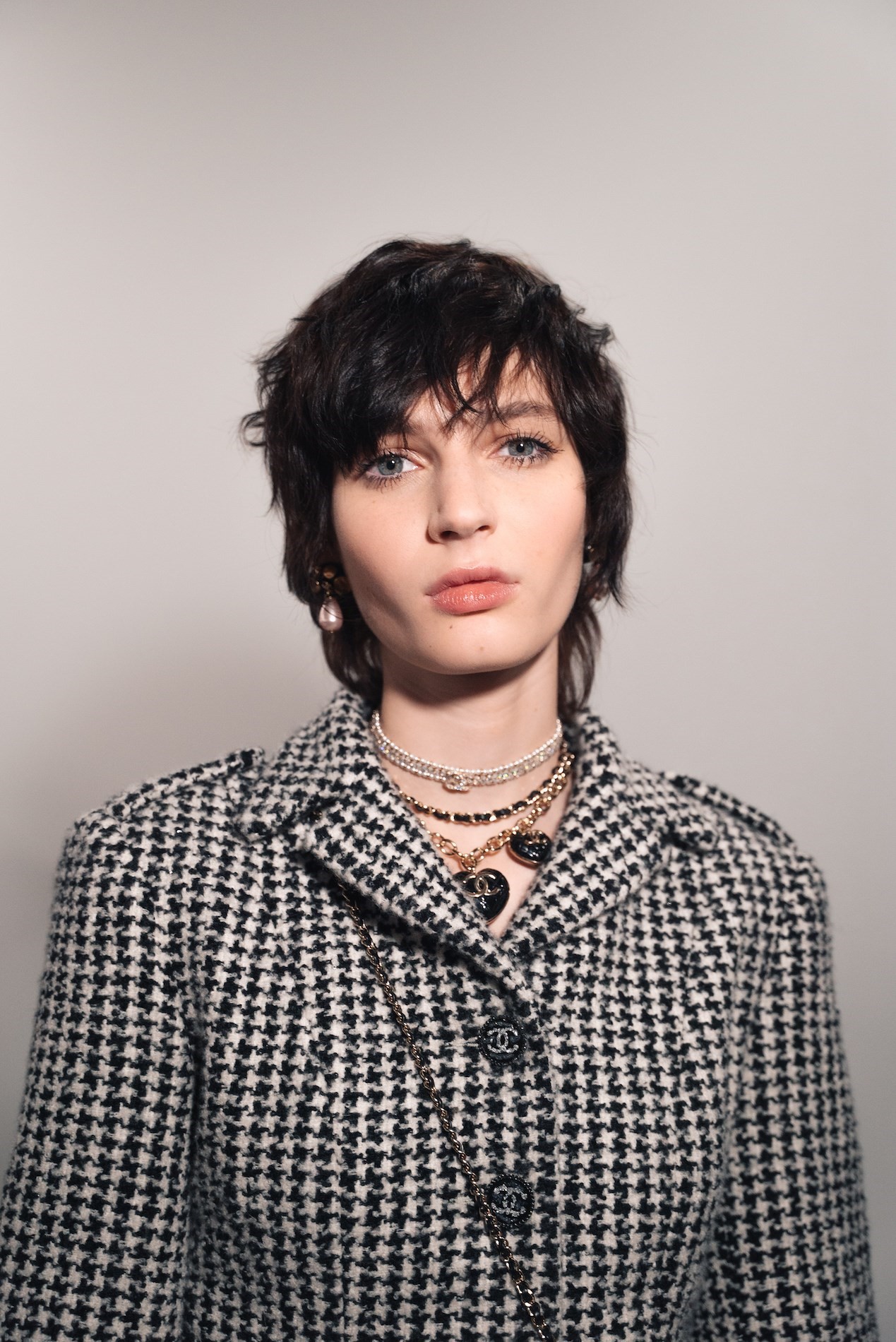Gabrielle Chanel adored tweed – she loved its melange of multiple colours in a single swatch of cloth, its pliant softness, its ability to hide a network of quilting stitches within its nubby surface. It helped her invent her signature cardigan suits in the 1950s, the fluid fabric permitting her to create the softness she craved, a material that would become as associated with her name and legacy as jersey. Virginie Viard adores tweed too – for all the above reasons, as well as its place within the canon of Chanel-isms. For her Autumn/Winter 2022 show, she smothered her entire venue in tweed, sending her models meandering down a tweedy catwalk in clothes crafted from this quintessentially Chanel fabric.
“Devoting the entire collection to tweed is a tribute,” Viard said. The tribute wasn’t just to Chanel’s clothes but to her life and lifestyle. Tweed, for Viard, connects Chanel to Scotland, and to Lochmore, the estate of her lover, the Duke of Westminster, which she first visited in 1925. In the mid-1920s, she borrowed his tweed jackets, slinging her artificial and real pearls (he bought her a bunch) over the top, and reinventing menswear as something fundamentally feminine and seductive. “There’s nothing sexier than wearing the clothes of the person you love,” continues Virginie Viard. “Of course, I’m fascinated by this ever-contemporary gesture.” As Chanel fell in love with him, she fell in love with the fabric, sourcing hers from Scottish and Irish mills, and began using them in her soft coats and suits as their affair flourished. A style was born.
The Chanel show recreated the River Tweed, the waterway that winds its passage between Scotland and northern England and gives the fabric its name through a lost-in-translation bit of Scottish-English communication. Well, OK, Chanel didn’t recreate it so much as allude to it though a meandering pathway of blue down which the models trudged in rubber boots, romanticised versions of those Chanel may have worn while traipsing the moors. There were no waterworks chez Coco.


It also didn’t feel like an archival airing: Viard’s clothes were peppy, popped with colour, hemlines often high, with tights knitted in tweedy textures with colour re-energised, as if Roy Lichtenstein had decided to try his hand at painting Scottish landscapes. Heels were low, the women moved easily. And while tweed was the main story, it wasn’t the only fabric – its sheens were mirrored in panné velvets, glossy leathers combined for a hearty, earthy feeling. Overall, the sense was the same as those first tweeds, created almost a hundred years hence: real clothes for real women to really live in.






